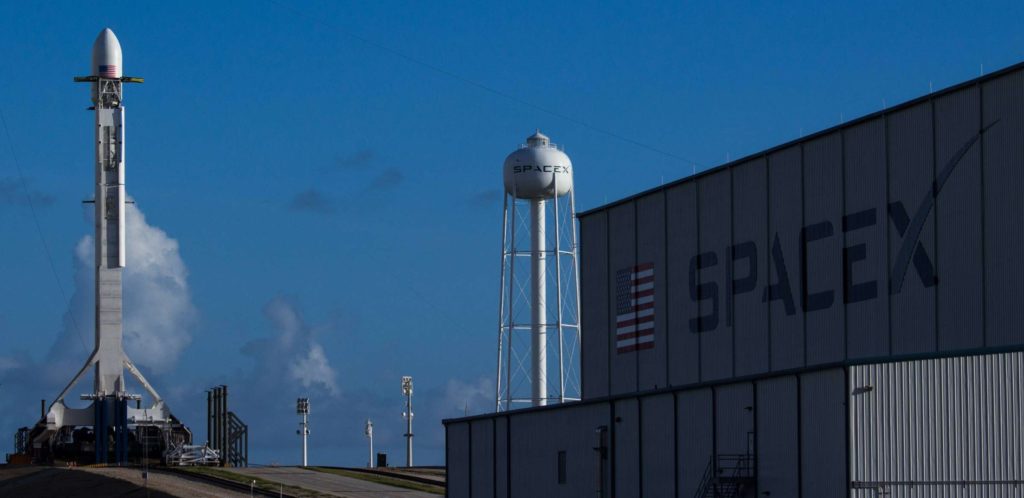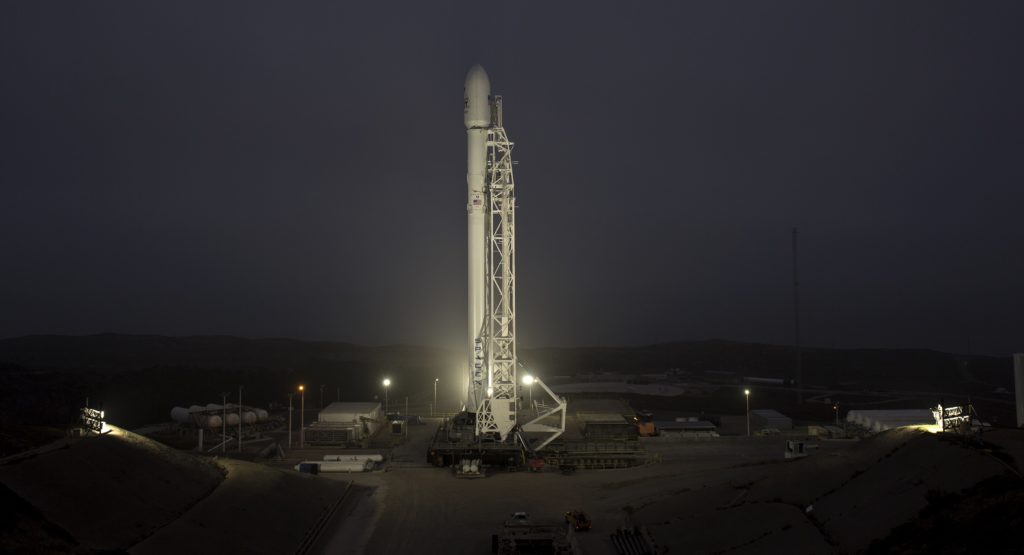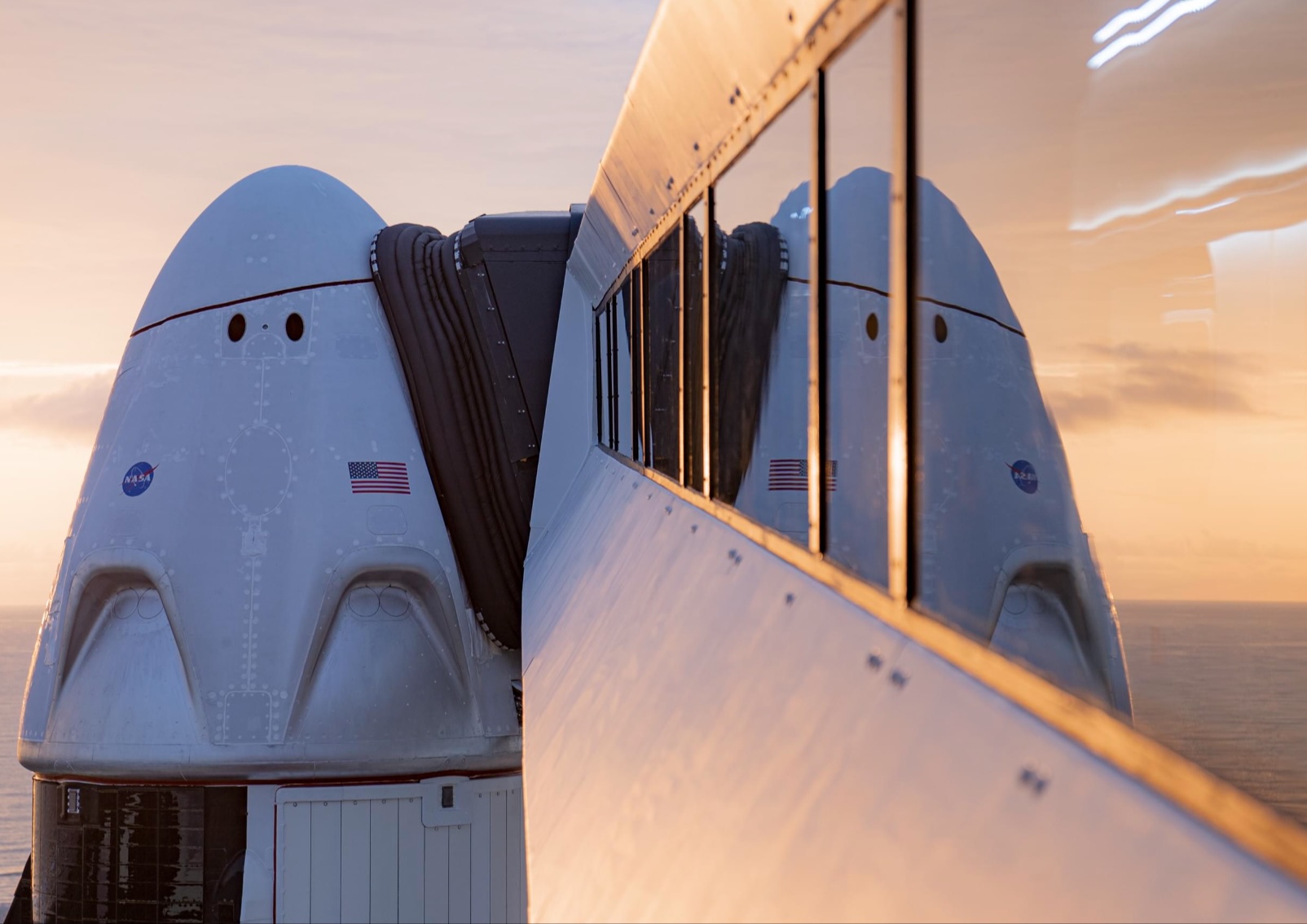

News
NASA & US Air Force consider SpaceX’s reusable rockets for future missions
Three of SpaceX’s largest and most important customers have in some way expressed significant interest in flying missions aboard recovered SpaceX Falcon 9 rockets. Even with respect to the three commercial reuses SpaceX has already accomplished this year, the combined interest of NASA, the US Air Force, and Iridium could well mark a major phase change in the space industry.
NASA
According to NASASpaceflight.com, NASA has been exploring reused Falcon 9 hardware for CRS-13, a cargo Dragon mission scheduled for no earlier than December 4th. If NASA finalizes approvals in time, CRS-13 could see SpaceX reuse both the Falcon 9 first stage and the Dragon spacecraft atop it, in many ways reminiscent of SpaceX’s ultimate goal of full reusability. Furthermore, for CRS-13, NASA is focused on launching aboard the same Falcon 9 that flew CRS-11 just four months ago, a pleasant synergy that would figuratively suggest the development of a fleet ownership-type attitude. NASA is by far SpaceX’s largest customer and has been an invaluable source of support and expertise for the company for nearly all of its 15 years of operations.

Falcon 9 1031 prepped and ready for its second flight and SpaceX’s third commercial reuse. (Tom Cross/Teslarati)
US Air Force
The week initially began with a Bloomberg interview of US Space Command head General Jay Ramond that can be best described as a resounding affirmation of the Air Force’s interest in reused SpaceX rockets. Never one for subtlety, Gen. Raymond was quoted saying that the USAF would be “absolutely foolish” and “dumb” to not consider flying on reused rockets. While reused hardware will need to be certified separately for Air Force missions, the Raymond suggested that the process of certifying the reusable Falcon 9 had already begun, although he was unable to provide a an estimate for when it might be completed. Ultimately, although the Air Force is laser-focused on reliability over all other traits, Raymond praised SpaceX for its role in introducing price-shrinking competition to the launch market and reiterated his “[complete] commitment to…reused rocket[s].”
Iridium Communications
Up next on the docket is Iridium, a satellite communications provider that contracted with SpaceX for the eight missions required to launch its next generation Iridium NEXT constellation. While CEO Matt Desch has openly expressed interest in reuse over the last year and a half, he remained skeptical and maintained that he was effectively waiting for a more amicable discount on reused vehicles before biting the bullet. SpaceX must have made an offer that couldn’t be refused, as Iridium Communications announced in a press release that the NEXT-4 and NEXT-5 missions will both fly atop reused Falcon 9 first stages, beginning with NEXT-4 on December 22nd.
Of crucial importance, Iridium also noted that the premiums paid to their launch insurers would not increase as a result of the adoption of reused hardware. While the change boosters means that the newly-completed Landing Zone at Vandenberg will have to wait until 2018 to host a Falcon 9 recovery, that is a small consolation to pay for yet another major customer warming up to SpaceX’s reusability program.

Falcon 9 1041 the night before its predawn liftoff for the Iridium NEXT-3 mission. (SpaceX)
Encore: Spacecom
Finally, in an unexpected and encouraging turn of events, Israeli communications satellite operator Spacecom announced on Wednesday that they had contracted with SpaceX for the 2019 and 2020 launches of the Amos-17 and Amos-8 communications satellites.
In early-September 2016, a Falcon 9 preparing to conduct a static fire suffered a catastrophic failure that destroyed vehicle, Spacecom’s Amos-6 payload, and extensively damaged Launch Complex 40. With SpaceX effectively at fault for the loss, they were contractually obligated to either return Spacecom’s $50m deposit or provide a second launch at no additional cost. Spacecom sided with the latter and further tripled down on SpaceX with a second launch order in 2020 and the decision to fly Amos-17 on a reused Falcon 9.
While one could dismiss the choice to exploit free reflight as a move begrudgingly forced by financial pragmatism, Spacecom’s Amos-8 launch order and decision to fly on reused hardware is undeniable evidence that the two companies have preserved their relationship in spite of the Amos-6 trials and tribulations.
Whoa. Spacecom not only going back to #SpaceX F9 for free re-flight of AMOS-6, but it looks like it will be on a flight-proven F9 to boot!
— Chris G (@ChrisG_SpX) October 18, 2017
All said and done, the fact that all four of these groundbreaking announcements occurred over the course of a handful of days is incredible. If the trope could ever be said to be applicable, it is hard to deny that SpaceX is likely on aerospace’s Cloud 9 this week.
News
SpaceX’s Crew-11 mission targets July 31 launch amid tight ISS schedule
The flight will lift off from Launch Complex 39A at Kennedy Space Center in Florida.

NASA and SpaceX are targeting July 31 for the launch of Crew-11, the next crewed mission to the International Space Station (ISS). The flight will lift off from Launch Complex 39A at Kennedy Space Center in Florida, using the Crew Dragon Endeavour and a Falcon 9 booster.
Crew Dragon Endeavour returns
Crew-11 will be the sixth flight for Endeavour, making it SpaceX’s most experienced crew vehicle to date. According to SpaceX’s director of Dragon mission management, Sarah Walker, Endeavour has already carried 18 astronauts representing eight countries since its first mission with NASA’s Bob Behnken and Doug Hurley in 2020, as noted in an MSN report.
“This Dragon spacecraft has successfully flown 18 crew members representing eight countries to space already, starting with (NASA astronauts) Bob (Behnken) and Doug (Hurley) in 2020, when it returned human spaceflight capabilities to the United States for the first time since the shuttle retired in July of 2011,” Walker said.
For this mission, Endeavour will debut SpaceX’s upgraded drogue 3.1 parachutes, designed to further enhance reentry safety. The parachutes are part of SpaceX’s ongoing improvements to its human-rated spacecraft, and Crew-11 will serve as their first operational test.
The Falcon 9 booster supporting this launch is core B1094, which has launched in two previous Starlink missions, as well as the private Ax-4 mission on June 25, as noted in a Space.com report.
The four-members of Crew-11 are NASA astronauts Zena Cardman and Mike Fincke, as well as Japan’s Kimiya Yui and Russia’s Oleg Platonov.
Tight launch timing
Crew-11 is slated to arrive at the ISS just as NASA coordinates a sequence of missions, including the departure of Crew-10 and the arrival of SpaceX’s CRS-33 mission. NASA’s Bill Spetch emphasized the need for careful planning amid limited launch resources, noting the importance of maintaining station altitude and resupply cadence.
“Providing multiple methods for us to maintain the station altitude is critically important as we continue to operate and get the most use out of our limited launch resources that we do have. We’re really looking forward to demonstrating that capability with (CRS-33) showing up after we get through the Crew-11 and Crew-10 handover,” Spetch stated.
Lifestyle
EV fans urge Tesla to acquire Unplugged Performance for edge in fleet and security industry
Unplugged Performance has built a name for itself by producing performance upgrades for Tesla vehicles.

A growing number of Tesla enthusiasts and longtime community voices are calling on the electric vehicle maker to acquire Unplugged Performance, a California-based aftermarket company best known for tuning Tesla vehicles and developing specialized government fleet solutions under its UP.FIT division.
The idea was once considered a niche proposal among EV fans, but it is now gaining serious attention not just as a performance play but as a strategic move to deepen Tesla’s roots in the fleet and security industry.
A strategic fit
Unplugged Performance has built a name for itself by producing performance upgrades for Tesla vehicles, from track-optimized components to visual and aerodynamic upgrades. But in recent years, its UP.FIT division has pivoted toward a more functional future by outfitting Tesla vehicles like Model Ys for police, military, and government use.
That work has sparked growing calls for closer collaboration with Tesla, especially as the EV maker increasingly leans into autonomy, AI, and fleet services as core components of its next chapter.
“I posted this four years ago, but I think it’s more true now than ever,” wrote Whole Mars Catalog, a well-known Tesla investor and FSD Beta tester, on X. “Tesla should buy Unplugged. But not just as a Performance division. What they are doing with UP.FIT unlocks large government and commercial fleet purchases that can improve utilization.”
Tesla fans such as shareholder Sawyer Merritt echoed the sentiment, calling Unplugged a “great fit within Tesla.” adding, “They are literally located directly next to Tesla’s design studio in Hawthorne.”
Enabling the next wave
Supporters of the idea noted that integrating Unplugged into Tesla’s corporate structure could help accelerate the adoption of autonomous technologies in government sectors. With UP.FIT patrol cars already in use across some U.S. police departments, Tesla fans envisioned a future where self-driving Teslas could potentially revolutionize law enforcement, search-and-rescue, and public service logistics.
“Just imagine how autonomous patrol cars could transform policing and bring us into a safer future,” the veteran FSD tester wrote.
The benefits could also extend to Tesla’s existing consumer base. “They also have some incredible products in the works that I think will appeal to many ordinary Tesla drivers — not just those looking for performance or mods. Stuff that’s so good it should have come straight from the design studio next door,” Whole Mars Catalog noted.
Unplugged Performance, founded in 2013, shares not just a product vision with Tesla, but also geography. Its Hawthorne headquarters sits directly adjacent to Tesla’s design studio, and the two companies have maintained a close working relationship over the years. The aftermarket firm has long positioned itself as a “mission-aligned” partner to Tesla.
In response to the recent calls for acquisition, Unplugged Performance acknowledged the support from the community. “Our very existence is to support the Tesla mission with @UpfitTesla and @UnpluggedTesla,” Unplugged CEO Ben Schaffer posted on X. “We love working with Tesla and are grateful for the community’s support since 2013!”
News
Tesla debuts hands-free Grok AI with update 2025.26: What you need to know
All new Tesla vehicles delivered on or after July 12, 2025, will include Grok AI out of the box

Tesla has begun rolling out Grok, an in-car conversational AI assistant developed by xAI, to eligible vehicles starting July 12. The feature marks the most direct integration yet between Elon Musk’s artificial intelligence startup and Tesla’s consumer product lineup, offering drivers hands-free access to a chat-style companion while on the road.
Grok comes pre-installed on new vehicles
According to Tesla’s FAQ page for the feature, all new vehicles delivered on or after July 12, 2025, will include Grok AI out of the box. Owners of older vehicles may gain access through an over-the-air update, provided their vehicle meets a few hardware and software requirements.
Specifically, Grok is currently only supported on Tesla models equipped with an AMD infotainment processor and running vehicle software version 2025.26 and higher. Compatible models include the Model S, Model 3, Model X, Model Y, and Cybertruck. A Premium Connectivity subscription or active Wi-Fi connection is also required.
Tesla notes that additional vehicle compatibility may arrive in future software updates.
Grok’s features and limitations for now
Drivers can engage with Grok using the App Launcher or by pressing and holding the voice command button on the steering wheel. Grok is designed to answer questions and hold conversations using natural language, offering responses tailored to its chosen personality—ranging from “Storyteller” to the more eccentric “Unhinged.”
For fun, Tesla posted a demonstration of Grok likely running on “Unhinged” talking about what it would do to Optimus when they are on a date, much to the shock of the humanoid robot’s official social media account.
It should be noted, however, that Grok cannot currently issue commands to the vehicle itself, at least for now. Traditional voice commands for tasks like climate control, navigation, or media remain separate from Grok as of writing.
The feature is being released in Beta and does not require a Grok account or xAI subscription to activate, although that policy may change over time.
Grok privacy and in-car experience
Tesla emphasizes that interactions with Grok are securely processed by xAI and not linked to a user’s Tesla account or vehicle. Conversations remain anonymous unless a user signs into Grok separately to sync their history across devices.
Tesla has also begun promoting Grok directly on its official vehicle webpages, showcasing the feature as part of its in-car experience, further highlighting the company’s increasing focus on AI and infotainment features on its all-electric vehicles.
-

 Elon Musk2 weeks ago
Elon Musk2 weeks agoTesla investors will be shocked by Jim Cramer’s latest assessment
-

 Elon Musk3 days ago
Elon Musk3 days agoxAI launches Grok 4 with new $300/month SuperGrok Heavy subscription
-

 Elon Musk5 days ago
Elon Musk5 days agoElon Musk confirms Grok 4 launch on July 9 with livestream event
-

 News1 week ago
News1 week agoTesla Model 3 ranks as the safest new car in Europe for 2025, per Euro NCAP tests
-

 Elon Musk1 week ago
Elon Musk1 week agoxAI’s Memphis data center receives air permit despite community criticism
-

 News2 weeks ago
News2 weeks agoXiaomi CEO congratulates Tesla on first FSD delivery: “We have to continue learning!”
-

 Elon Musk2 weeks ago
Elon Musk2 weeks agoTesla scrambles after Musk sidekick exit, CEO takes over sales
-

 News2 weeks ago
News2 weeks agoTesla sees explosive sales growth in UK, Spain, and Netherlands in June


















